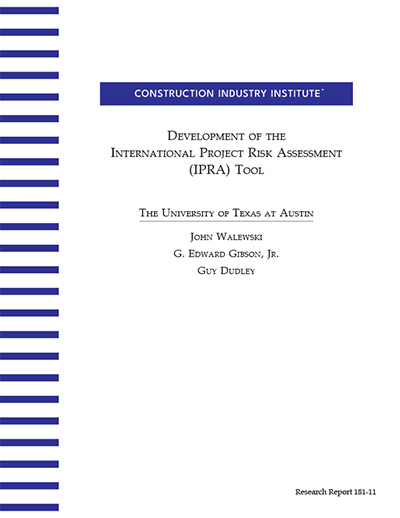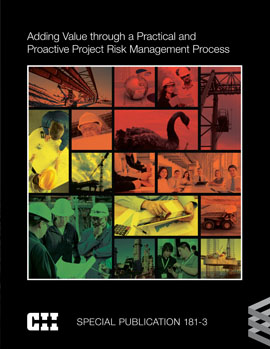
Development of the International Project Risk Assessment (IPRA) Tool
CII commissioned RT-181 in response to the increasing trend among U.S. firms (owners and contractors) pursuing projects outside of North America which carried with them risks unique to projects in foreign jurisdictions. These risk factors are specific to international projects and represented an additional layer of threat/opportunity to the stakeholders’ interests.
RT-181 established the following objectives:
- Develop a process to identify and assess risks specific to international projects using standard terminology.
- Develop a list of risk elements specific to international projects.
- Create a structured process to help identify, measure, and track risks from an early stage of project development through operation of the facility.
To enhance the identification and assessment of international project risks, RT-181 developed a structured risk identification and assessment process known as the International Project Risk Assessment (IPRA). The IPRA has been tailored to address the specific issues typically encountered by those working in an international setting. The tool focuses on the international aspects and does not address issues considered basic to the project. As outlined in this summary, research has shown that the tools and techniques developed by the project team can assist in improving the overall success of international capital projects.


